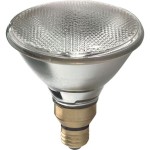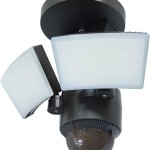How to Sand and Stain an Outdoor Table
Outdoor tables endure constant exposure to the elements, making them vulnerable to wear and tear. Sanding and staining are crucial steps in maintaining the aesthetic appeal and prolonging the lifespan of these tables. This process not only removes existing imperfections but also provides a protective barrier against moisture, UV radiation, and other environmental factors that contribute to deterioration.
Proper preparation is essential for a successful sanding and staining project. Before commencing any work, gather the necessary tools and materials. This includes safety gear such as eye protection, a dust mask, and gloves. The required abrasives consist of various grits of sandpaper, starting with a coarser grit for initial removal of old finishes and imperfections, progressing to finer grits for smoothing the surface. A sanding block or orbital sander will facilitate efficient and even sanding. For staining, select a suitable outdoor stain designed for the type of wood your table is made from. A stain applicator, such as a brush or foam pad, and clean rags for wiping excess stain are also indispensable. Finally, a clean and well-ventilated workspace is necessary for carrying out the project safely and effectively.
Key Point 1: Preparing the Table for Sanding
The initial stage involves a thorough inspection of the table. Identify any areas requiring repair, such as loose joints, cracks, or splinters. Loose joints should be reinforced with wood glue and clamps, allowing ample time for the glue to cure completely. Fill any cracks or splinters with exterior-grade wood filler, ensuring it is level with the surrounding surface. Once the filler has dried, remove any hardware, such as screws or bolts, that might impede the sanding process. If hardware cannot be removed, protect it with painter's tape to prevent damage during sanding.
Cleaning the table surface is paramount before sanding. Remove any dirt, debris, or mildew with a mixture of mild soap and water. Use a scrub brush to dislodge stubborn stains or grime. Rinse the table thoroughly with clean water and allow it to dry completely. This step ensures that the sandpaper does not become clogged with contaminants, leading to a more effective sanding process.
For tables with a severely damaged or peeling finish, consider using a paint stripper to remove the bulk of the old finish before sanding. Apply the paint stripper according to the manufacturer's instructions, allowing sufficient time for it to penetrate the finish. Use a scraper to remove the softened finish, taking care not to gouge the wood. Neutralize the surface with a mineral spirits rinse to remove any remaining stripper residue. Allow the table to dry completely before proceeding to sanding.
Key Point 2: The Sanding Process
Begin sanding with a coarse-grit sandpaper, typically around 80-grit, to remove the existing stain, varnish, or any other imperfections on the wood surface. Attach the sandpaper to a sanding block or orbital sander for efficient and even sanding. Sand in the direction of the wood grain to avoid scratching the surface. Apply moderate pressure, ensuring consistent coverage across the entire table. Avoid concentrating on one area for too long, as this can result in uneven sanding.
After the initial sanding with coarse-grit sandpaper, switch to a medium-grit sandpaper, such as 120-grit, to smooth the surface and remove any scratches left by the coarser grit. Again, sand in the direction of the wood grain, using consistent pressure. Pay close attention to edges and corners, ensuring they are evenly sanded. Regularly clean the sandpaper with a brush or compressed air to prevent clogging. This will maintain the sandpaper's effectiveness and produce a smoother finish.
The final sanding step involves using fine-grit sandpaper, typically 220-grit, to achieve a smooth, paint-ready surface. This step is crucial for ensuring that the stain adheres properly and produces a uniform color. Sand lightly in the direction of the wood grain, focusing on removing any remaining imperfections. After sanding, thoroughly remove all sanding dust with a vacuum cleaner or tack cloth. Dust particles can interfere with the stain's adherence, resulting in an uneven finish. A clean surface is essential for optimal stain penetration and color consistency.
Key Point 3: Staining the Table
Before applying the stain, select a suitable outdoor stain that is designed for the type of wood your table is made from. Choose a stain color that complements your outdoor decor and provides the desired level of protection against UV radiation and moisture. Stir the stain thoroughly to ensure even pigment distribution. Test the stain on an inconspicuous area of the table to ensure that the color is satisfactory. This will prevent any surprises and allow you to adjust the stain if necessary.
Apply the stain evenly to the table surface using a brush, foam pad, or rag. Work in the direction of the wood grain, ensuring that the stain penetrates the wood pores. Avoid applying too much stain at once, as this can lead to an uneven finish. Allow the stain to sit on the surface for the recommended amount of time, as specified by the manufacturer. This allows the pigment to fully penetrate the wood. Use a clean rag to wipe off any excess stain, again working in the direction of the wood grain. This step ensures that the stain is evenly distributed and prevents the formation of drips or runs.
Allow the stain to dry completely according to the manufacturer's instructions. Drying times can vary depending on the type of stain and environmental conditions. Once the stain is dry, apply a second coat if desired, following the same application and wiping process. Multiple coats of stain can enhance the color intensity and provide increased protection. After the final coat of stain has dried, apply a clear coat of exterior-grade sealant to protect the stain from the elements. The sealant will provide a durable barrier against moisture, UV radiation, and other environmental factors that can damage the stain and wood. Apply the sealant according to the manufacturer's instructions, ensuring even coverage. Allow the sealant to dry completely before using the table. After the sealant has cured, the outdoor table is ready for use, now protected and aesthetically enhanced.

How To Refinish Outdoor Wood Furniture

How To Refinish Outdoor Wood Furniture With A Solid Stain

How To Re Wooden Outdoor Furniture The Honeycomb Home

How To Re Wooden Outdoor Furniture The Honeycomb Home

How To Re An Outdoor Table Wagner Spraytech

How To Refinish Outdoor Wood Furniture With A Solid Stain

How To Stain A Picnic Table Momadvice

How To Refinish Acacia Wood Outdoor Furniture

How To Re Wooden Outdoor Furniture The Honeycomb Home

Refinish Outdoor Wood Furniture A Step By Guide For Stunning Makeover
Related Posts







